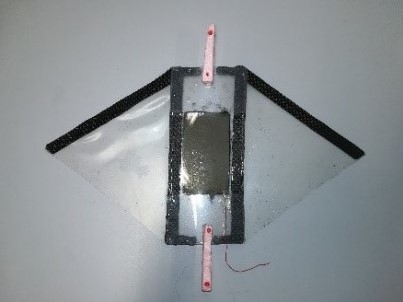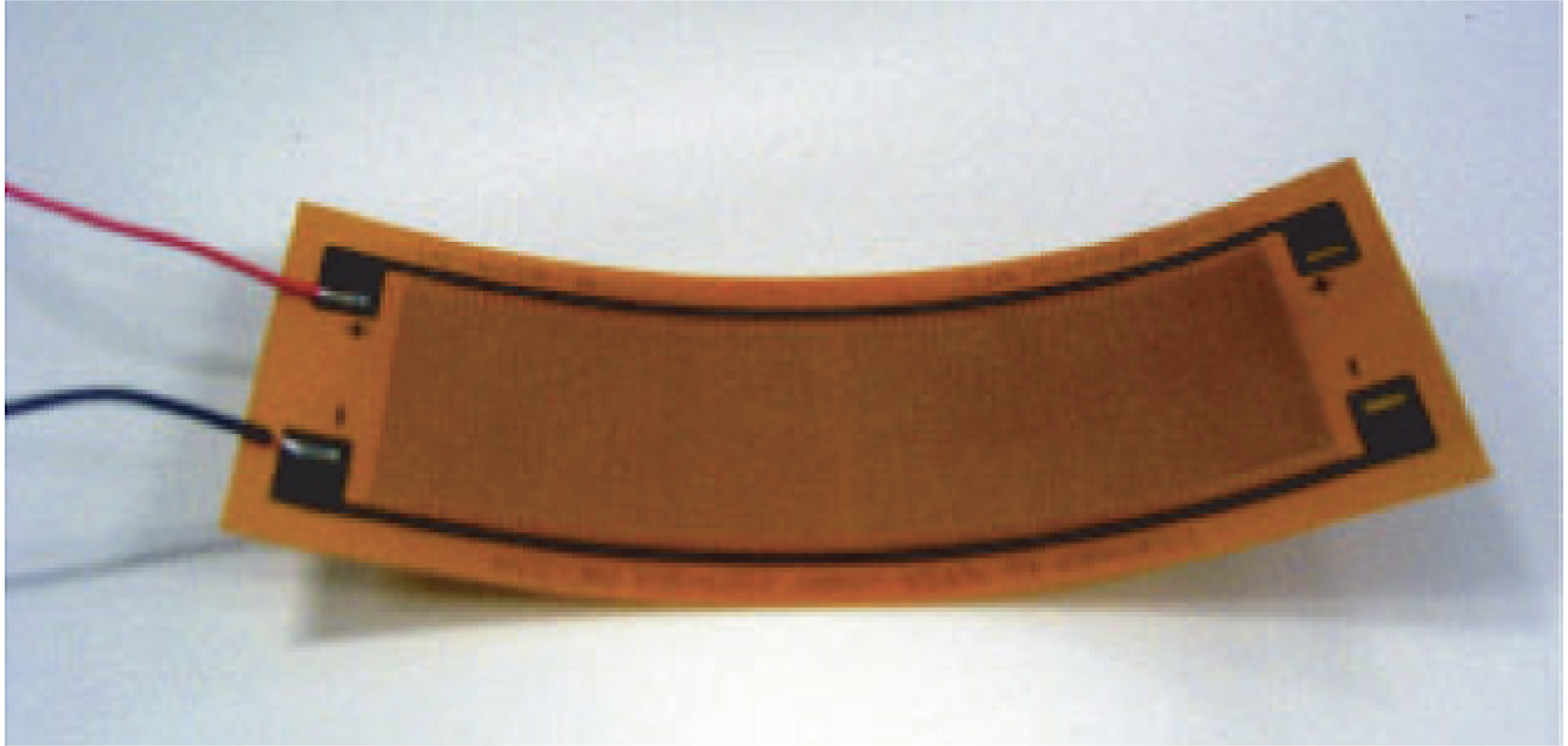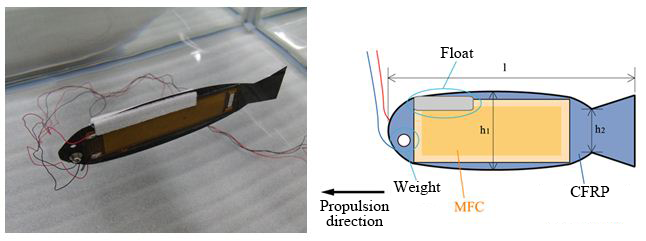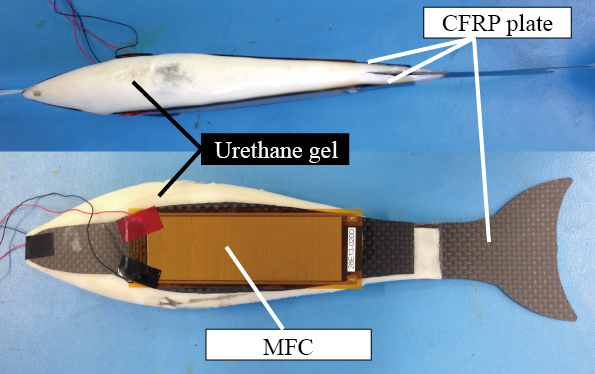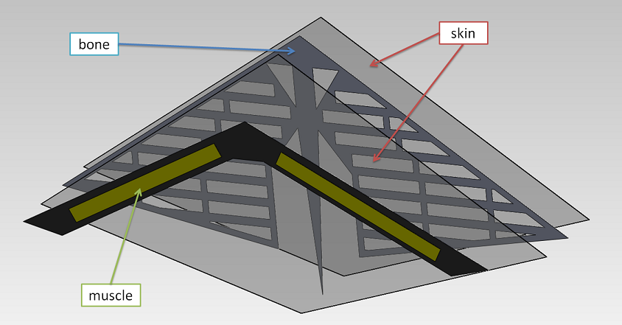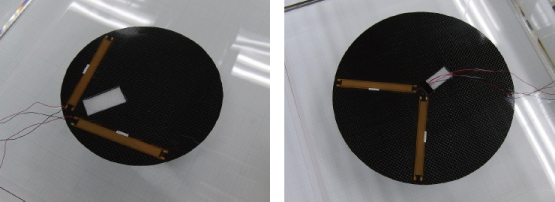![[PukiWiki] [PukiWiki]](image/logo.png)
電気通信大学 明・佐藤研究室 |
Research and development of biomimetic soft underwater robotThis laboratory is engaged in research and development of biomimetic soft underwater robots that enable high-speed and high-efficiency propulsion. Why biomimetic?Some underwater robots, such as a screw type, achieve high-speed propulsion. However, there are concerns about adverse effects such as inhaling organisms and rolling up sand. Therefore, by imitating the natural swimming of organisms, it is expected to minimize the impact on the environment and to realize the excellent exercise performance of organisms. Why soft robots?Many biomimetic underwater robots that have been developed so far were motion mechanisms that combined motors and cranks. Due to the rigidity of the aircraft, there was a problem that smooth interaction with fluids like living things could not be realized. Therefore, using soft actuators and flexible materials (CFRP and PET) to realize a robot with a soft structure is important for biomimicry. This research aims at the realization of a biomimetic soft underwater robot that realizes excellent movement by fusing biomimetics and soft robotics. Dielectric elastomer actuator (DEA)Soft actuator composed of dielectric elastomer material and elastic flexible electrode. Compared to existing piezoelectric actuators and electrostatic actuators, it has the advantages of superior flexibility and greater strain. By applying a voltage to the elastomer, Maxwell stress is generated and the elastomer stretches.Currently, we are developing a soft underwater robot centering on this DEA. Soft manta robotWe have developed a manta robot that drives a kite by placing an actuator capable of bending motion in the center of the robot.The stiff carbon fiber in the front drives the flexible silicon part in the back, which makes swimming possible.In addition, the actuator can be driven in water by sandwiching the electrode with an elastomer. Eel type robotWe have developed a tube-type drive module that enables bending drive by making DEA into a tube shape. In addition to increase the displacement by connecting, we also made a prototype of an underwater robot. This eel type robot achieved 43.7 [mm /s] propulsion in the fluid.
Piezoelectric fiber composite material (MFC)Piezoelectric material is a material that can convert electrical energy and mechanical energy by piezoelectric effect and inverse piezoelectric effect. In this research, we use Macro Fiber Composite (MFC), which is a piezoelectric fiber composite material that has superior characteristics to existing piezoelectric materials, as an actuator. MFC consists of a piezoelectric ceramic fiber layer, an epoxy layer, and a polyimide layer printed with comb-like electrodes.By applying an electric field, it expands and contracts in the direction of the piezoelectric ceramic fiber. By bonding this MFC to a flexible material (CFRP or PET), the amount of strain can be converted as a force or displacement in the bending direction, which enables flexible bending motion. Body flexion and caudal fin type propulsionSalmon type underwater robotTwo piezoelectric elements were attached to both sides of the carbon plate cut out based on the salmon projection. As a result, bending movement and propulsion from the main body to the tail fin were realized. When two piezoelectric elements are used, it is possible to obtain a larger driving force than when only one is driven by driving symmetrically, and to obtain a turning motion by driving asymmetrically. Sea snake type underwater robotThe swimming shape was selected and developed by modal analysis and time history response analysis considering the surrounding fluid as additional mass. This realized eel type promotion with high swimming efficiency. 3D salmon robotDeveloped a robot that has a volume to incorporate a drive system and enables high-efficiency propulsion by imitating the rigidity distribution and three-dimensional streamline shape of fish musculoskeletal structures. 3D salmon robot with built-in drive systemWe designed and developed a drive system built in a three-dimensional salmon type soft underwater robot using piezoelectric fiber composite material. An all-in-one underwater robot has been realized by incorporating a power supply, amplifier, and wireless module inside. In addition, water-resistant driving has been achieved by incorporating waterproofing. Flapping type promotionDevelopment of manta type underwater robot with flapping mechanismFocusing on the flapping propulsion manta ray, we developed a manta type underwater robot using a piezoelectric fiber composite material. Manta's musculoskeletal structure has a very complex structure, and flapping-type propulsion was realized by imitating the simplified fin movement. A carbon plate is used for the main body, PET is used for the parts that require flexibility, and an actuator is attached to the part corresponding to the front edge of the fin to drive it. Improved performance by introducing a skeletonAn actual manta has a grid-like skeleton with different stiffnesses in the chord direction and the span direction. By imitating this body structure, we improved the maneuverability of the manta type underwater robot. By examining the structure using simulation software and conducting actual machine experiments, the body speed ratio of the robot with the skeleton improved to about 3.6 times that of previous research. In addition to straight ahead and on-the-spot turning, we were able to achieve backward movement. Realization of various 2D promotionIn the process of underwater robot structural analysis, we found that shape symmetry is one of the factors that determine motion. Therefore, in order to realize various propulsion motions, we created a circular robot that is symmetric in all directions on a plane. Through simulation software analysis and actual machine experiments, the left robot 1 has achieved forward, reverse, and rotational movements, and the right robot 2 has achieved forward and backward movements. |

